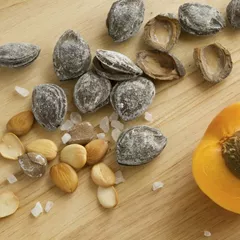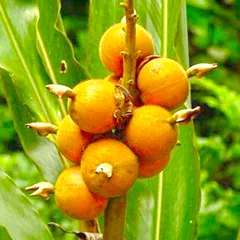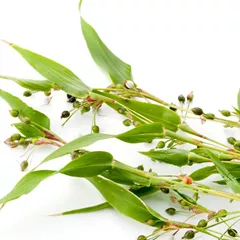Dampness in the Gallbladder
The information provided here is not a replacement for a doctor. You shouldn't use it for the purpose of self-diagnosing or self-medicating but rather so you can have a more informed discussion with a professional TCM practitioner.
At a glance
Preliminary reading: What is a pattern? The concept of Dampness The Gallbladder in Chinese Medicine
Key attributes
Chinese name: 胆湿 Pinyin name: Dǎn Shī
Pattern nature: Full
Causes
Precursor patterns: Liver Qi Stagnation Spleen Qi Deficiency
Common causes: 1. Exterior Dampness, 2. Diet
Diagnosis
Common symptoms: Jaundice No thirst Turbid urine Dull headache Dull-yellow eyes and eight other symptoms
Pulse type(s): Slippery (Hua), Wiry (Xian)
Tongue description: Thick sticky white coating, either bilateral in two strips or unilateral
Treatment
Treatment principle: Resolve Dampness, clear the Gallbladder, promote the smooth flow of Liver Qi.
Common formulas: San Ren Tang
Pathology
Dampness in the Gallbladder is typically paired with an underlying Spleen Qi Deficiency which makes the Spleen unable to transform Fluids.
As such the whole Middle Burner is typically affected, hence the symptoms of nausea and vomiting: the obstruction caused by Dampness prevent Stomach Qi from descending and it therefore rebels upwards.
Dampness also interferes with the smooth flow of Liver Qi, which stagnates and may cause hypochondrial distension and pain.
The sticky taste in the mouth and turbid urine are also classic signs of Dampness, and so is the dull headache which tends to occur when Dampness lodges in the head.
The feeling of fullness in the hypochondrium and a general feeling of heaviness are much more specific to dampness in the Gallbladder.
Causes
Precursor patterns: Dampness in the Gallbladder can derive from Liver Qi Stagnation Spleen Qi Deficiency
Exterior Dampness: Exterior Dampness, typically from overexposure to humid and damp environments, may invade the Gallbladder and lead to this pattern.
Diet: The excessive consumption of fried and fatty foods or dairy products is the most common cause of this pattern.
Diagnosing Dampness in the Gallbladder
Diagnosing a pattern in Chinese Medicine is no easy feat and should be left to professional practitioners. In particular one has to know how to differentiate between different types of pulses and tongue coatings, shapes and colors as well as learn to read from a long list of seemingly unrelated symptoms.
Pulse type(s): Slippery (Hua) or wiry (Xian)
Tongue description: Thick sticky white coating, either bilateral in two strips or unilateral
Main symptoms: Jaundice No thirst Turbid urine Dull headache Dull-yellow eyes Hypochondriac pain Nausea or vomiting Dull-yellow sclera Feeling of heaviness Dull-yellow complexion Hypochondrium fullness Inability to digest fats Sticky taste in the mouth
Diagnosis commentary: Hypochondrial fullness, feeling of heaviness and a unilateral sticky coating of the tongue are enough in and of themselves to diagnose Dampness in the Gallbladder.
Treating Dampness in the Gallbladder
Treatment principle
Resolve Dampness, clear the Gallbladder, promote the smooth flow of Liver Qi.
Herbal formulas used to treat Dampness in the Gallbladder



The top herbs in San Ren Tang are Apricot Seeds (Xing Ren), Cardamon Fruits (Bai Dou Kou) and Job's Tears (Yi Yi Ren)
San Ren Tang
Source date: 1798 AD
Number of ingredients: 8 herbs
Key actions: Clears Damp-Heat. Disseminates the Qi. Facilitates the Qi mechanisms.
Formula summary
San Ren Tang is a 8-ingredient Chinese Medicine formula. Invented in 1798 AD, it belongs to the category of formulas that clear Heat and expel dampness.
Diet recommendations
Stay away from fat, fried and greasy foods and favor a light diet.
Try to avoid exposure to damp and humid environments. You might consider purchasing a dehumidifier if your home or office space is affected.
Consequence patterns
Dampness in the Gallbladder frequently combines with Heat to form Damp-Heat.
Dampness in the Middle Burner obstructs the free flow of Liver Qi and may lead to Liver Qi Stagnation.
If it combines with Heat, the Dampness may lead to Phlegm-Heat
The Dampness in this pattern obstructs the Middle Burner and prevents Stomach Qi from descending, leading it to rebel upwards.
